Las calaveras de posada / The posada skulls
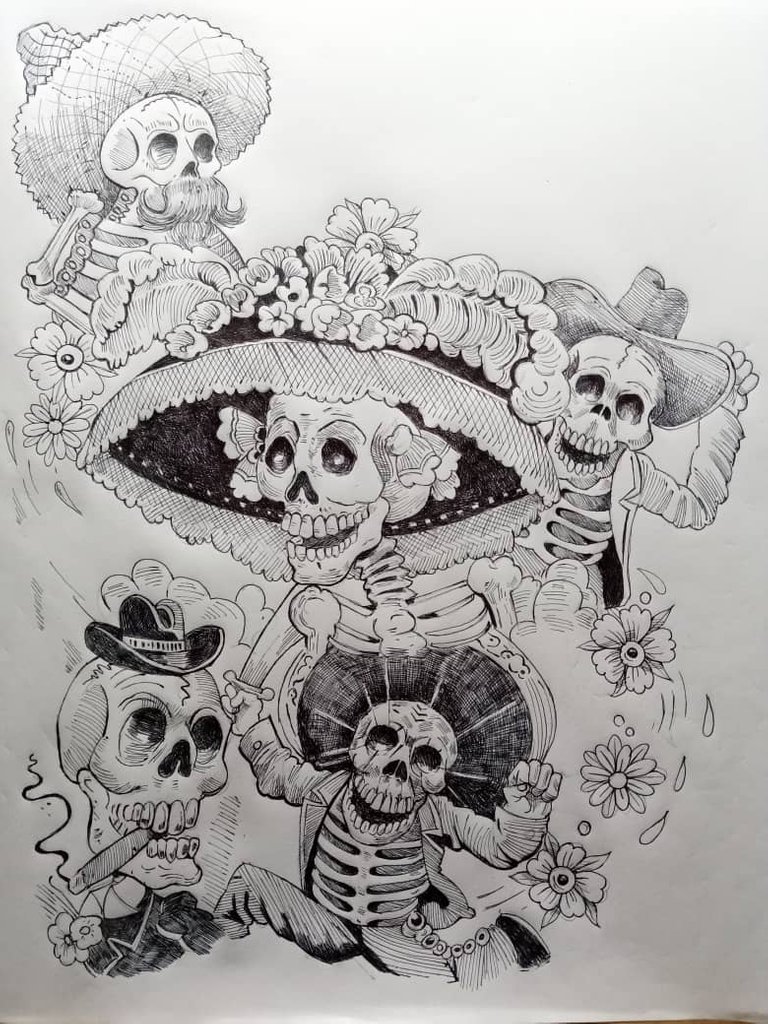
Hola amigos / Hello friends
Jose Guadalupe Posada, nació el 2 de febrero de 1852, en Aguascalientes, México. Caricaturista que utilizó el arte gráfico con sátira y para denunciar una realidad que desaprobaba. A finales del siglo XIX, sus obras gráficas ilustraban los más importantes diarios de carácter nacionalistas, que se oponían al régimen conservador porfirista. Posada encontró en la figura de la muerte la máxima expresión de democracia, ya que —sostenía— que no importa la clase social, la raza o la nacionalidad, todos compartimos el mismo destino: la muerte. Las calaveras de posadas no solo denuncian la realidad política de su época, sino que muestran toda una crónica visual del México decimonónico, en donde la algarabía y el jolgorio tan característicos del pueblo mexicano no podían faltar. Su trabajo más representativo es, sin duda, la calavera conocida como “La Catrina”. Originalmente llamada “La calavera Garbancera”. Este grabado se burlaba de las mujeres indígenas que aspiraban a ser como las damas españolas de clase alta. Es considerado precursor del movimiento nacionalista mexicano de artes plásticas. Célebre por sus dibujos y grabados sobre la muerte. Apasionado por dibujar caricatura política. Desarrolló nuevas técnicas de impresión. Trabajó y fundó periódicos importantes. Consolidó la fiesta del día de los muertos, por sus interpretaciones de la vida cotidiana y actitudes del mexicano por medio de calaveras, actuando como gente común. Al final, su muerte, el 20 de enero de 1913, pareció no importar a nadie, murió en la pobreza, su acta de defunción señaló alcoholismo como causal, sus restos fueron enterrados en una fosa común, junto a decenas de calaveras del montón que, como él, fueron olvidadas. La amarga ironía es que su obra más conocida, la garbancera, comenzó a circular impresa en noviembre de 1913, 11 meses después de su funeral.
Jose Guadalupe Posada, was born on February 2, 1852, in Aguascalientes, Mexico.
Caricaturist who used graphic art with satire and to denounce a reality he disapproved of.
At the end of the 19th century, his graphic works illustrated the most important nationalist newspapers, which opposed the conservative Porfirian regime.
Posada found in the figure of death the maximum expression of democracy, since -he argued- that no matter the social class, race or nationality, we all share the same destiny: death.
The skulls of posadas not only denounce the political reality of his time, but also show a visual chronicle of nineteenth-century Mexico, in which the hullabaloo and revelry so characteristic of the Mexican people could not be absent.
His most representative work is, without a doubt, the skull known as "La Catrina". Originally called "La calavera Garbancera". This engraving mocked the indigenous women who aspired to be like the upper class Spanish ladies.
It is considered a precursor of the Mexican nationalist movement of plastic arts. Famous for his drawings and engravings on death. Passionate about drawing political caricature. Developed new printing techniques. Worked and founded important newspapers. Consolidated the celebration of the Day of the Dead, for his interpretations of the daily life and attitudes of the Mexican through skulls, acting as common people.
In the end, his death, on January 20, 1913, seemed not to matter to anyone, he died in poverty, his death certificate indicated alcoholism as the cause, his remains were buried in a common grave, along with dozens of other skulls that, like him, were forgotten. The bitter irony is that his best known work, La Garbancera, began to circulate in print in November 1913, 11 months after his funeral.
Here I show you the drawing process:
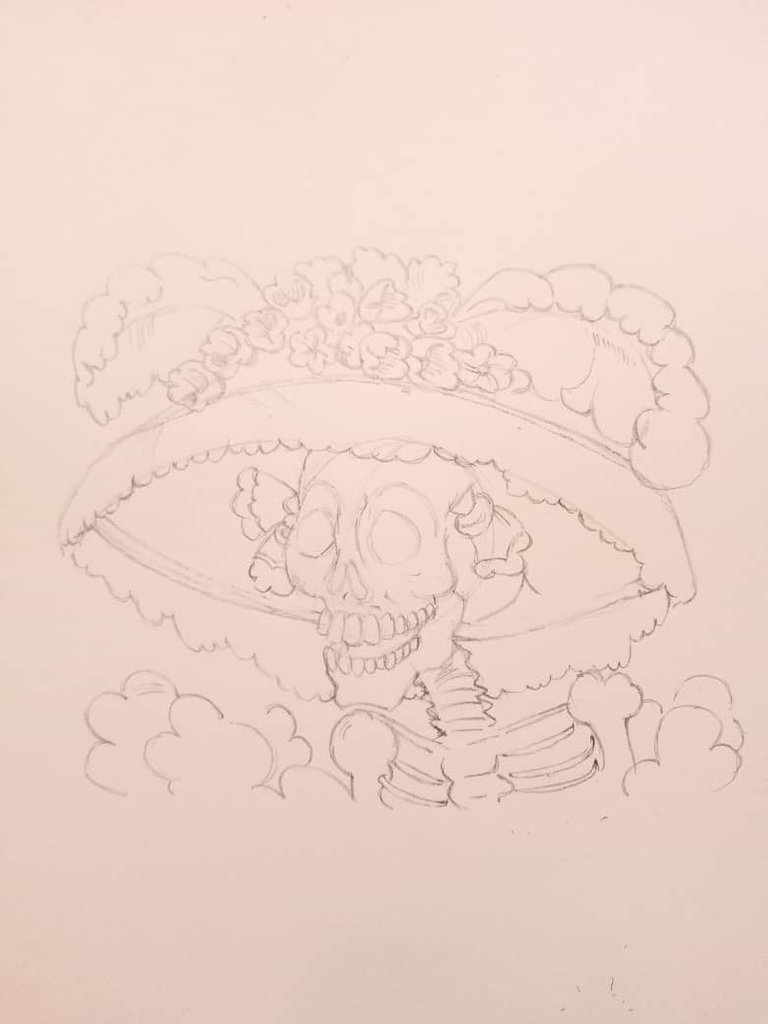

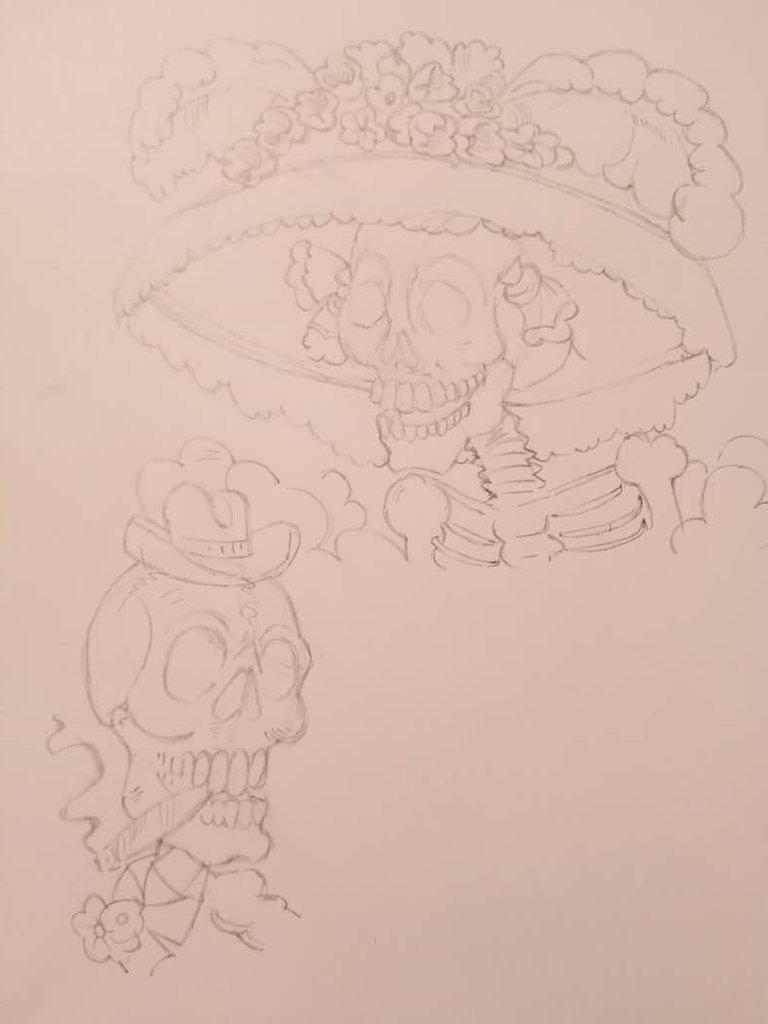
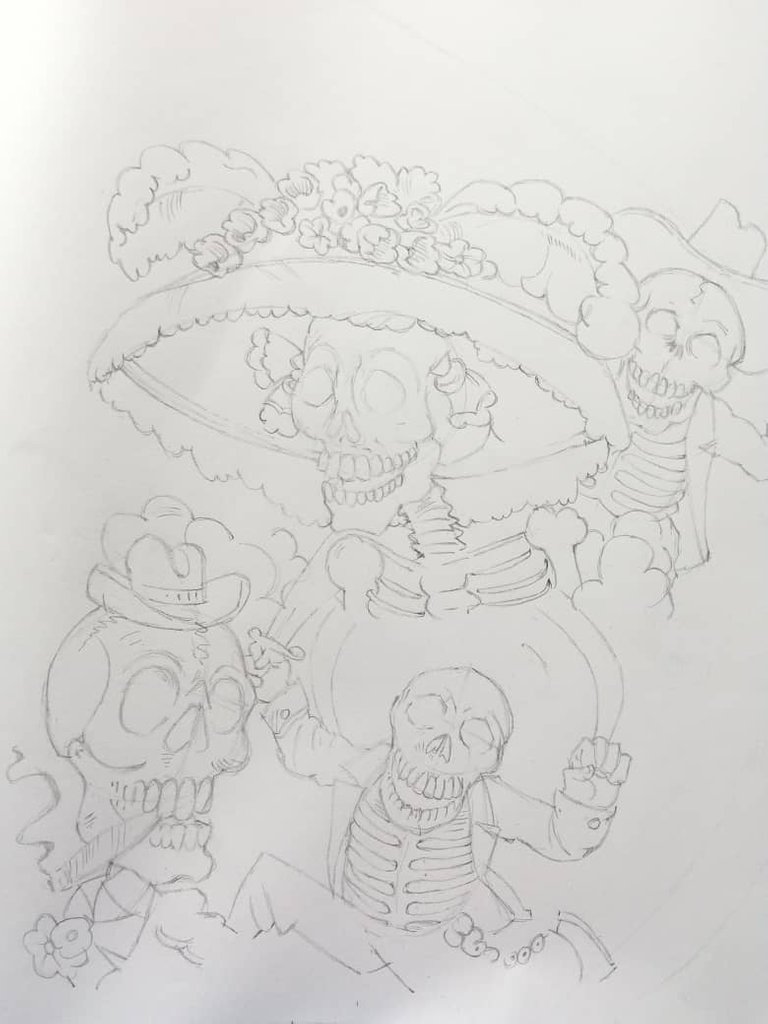
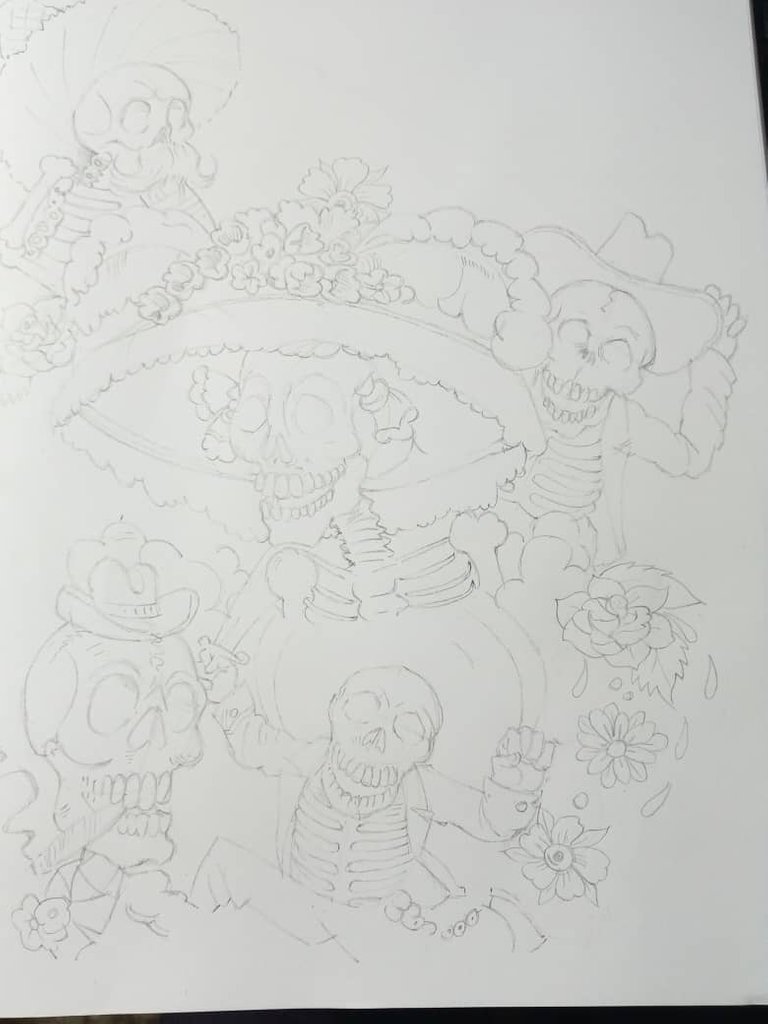
Initial Sketch
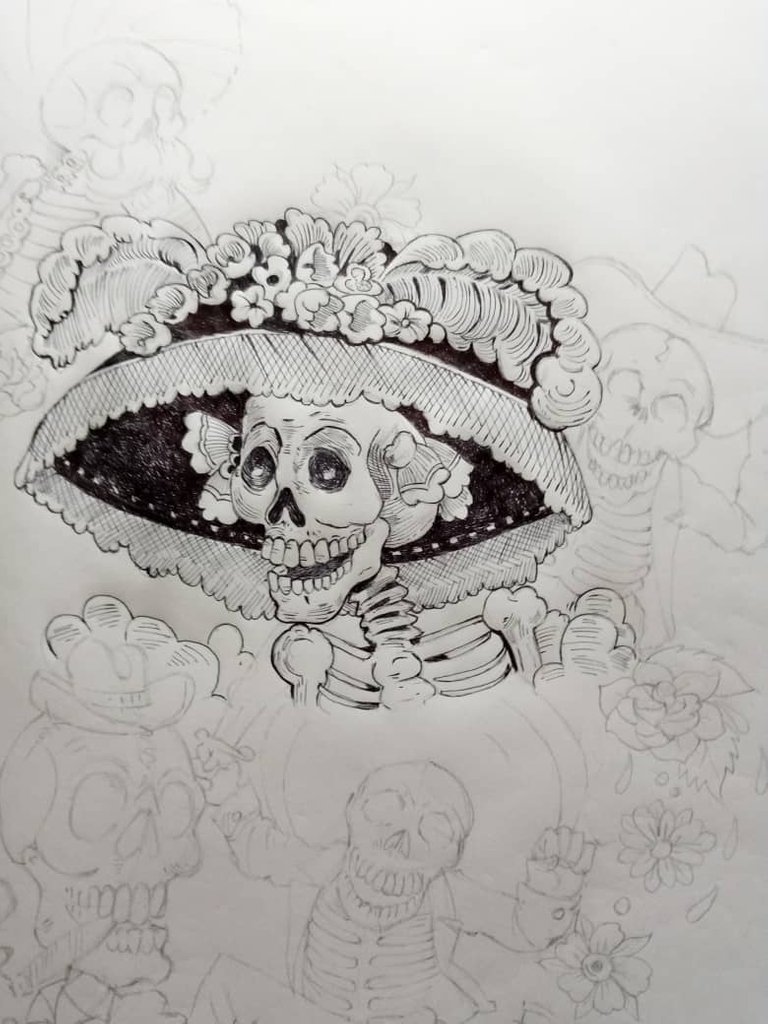
The catrina. Originally called "La calavera garbancera". It criticized the "Garbanceros", people with indigenous blood who pretended to be Europeans. Diego Rivera gave it the name "La catrina" in 1946.
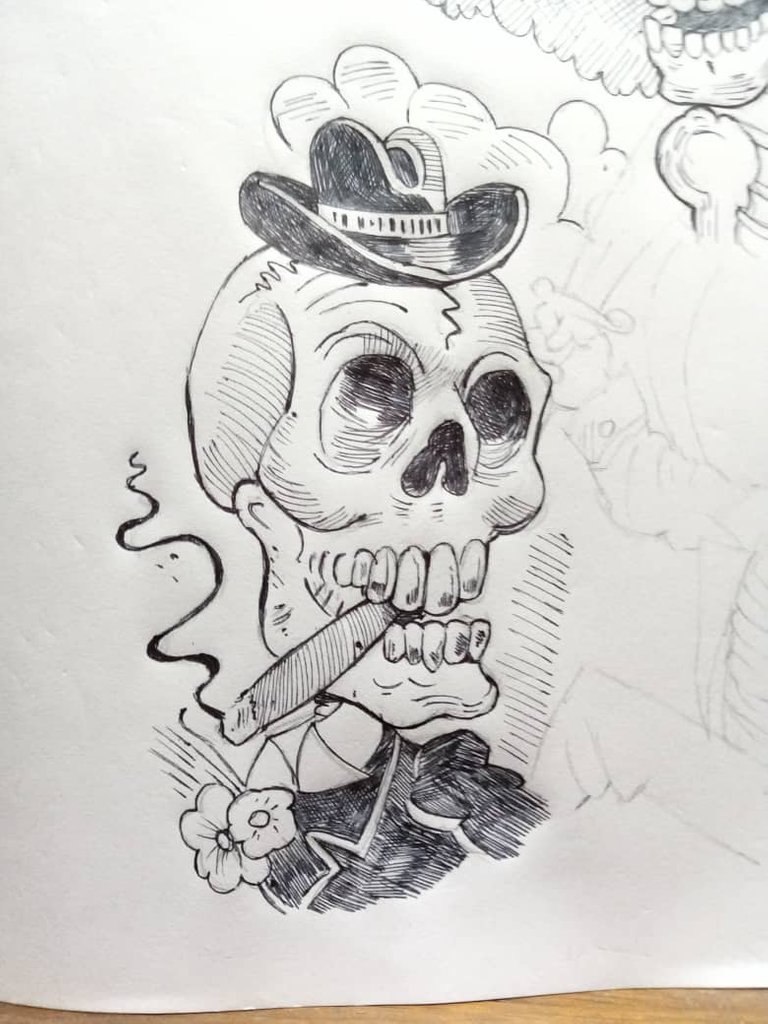
The catrin.** is one of the most unique figures of the Day of the Dead in Mexico. Dressed in elegant costumes and showing his best dance steps, this character accompanies the catrina in this ancient celebration of life and death.

The maderista skull. The illustration is a skeleton of a drunken peon wearing a sombrero, serape and sandals, holding a bottle of Aguardiente de Parras, which refers to the Madero family's distillery and maguey plantation. The mustache and beard identify him as Madero.
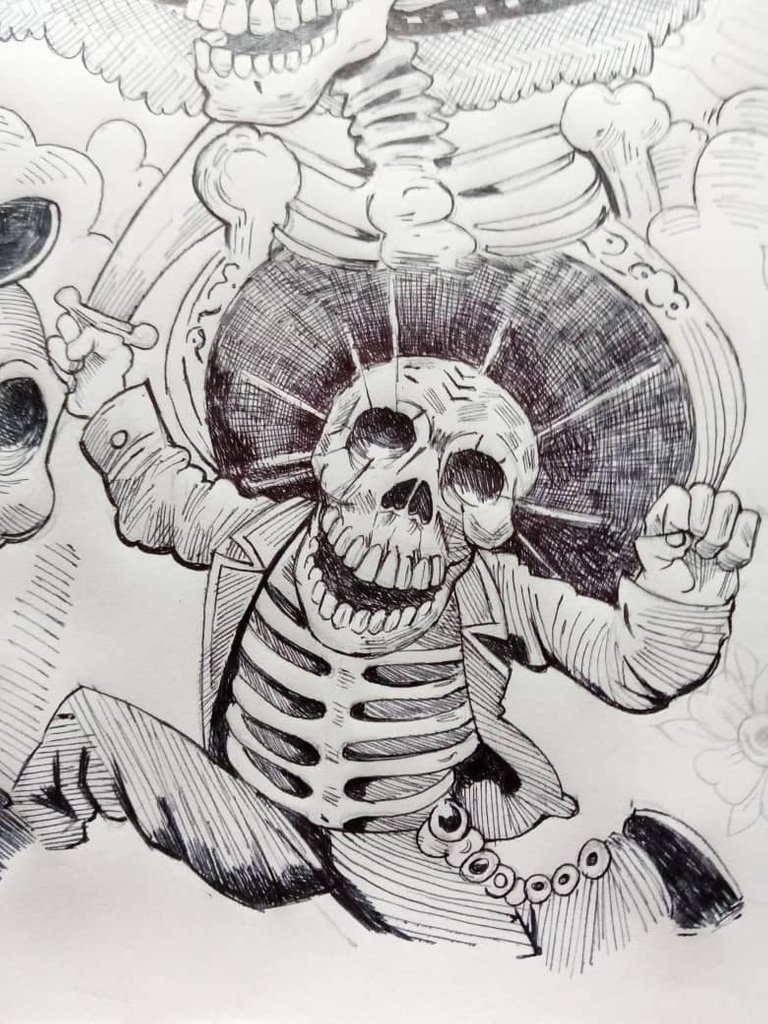
The Oaxacan skull. It shows a crowd of skulls moving aside to make way for a skull dressed as a charro, running swiftly, brandishing a dagger in his right hand and whose eyes seem to flash.
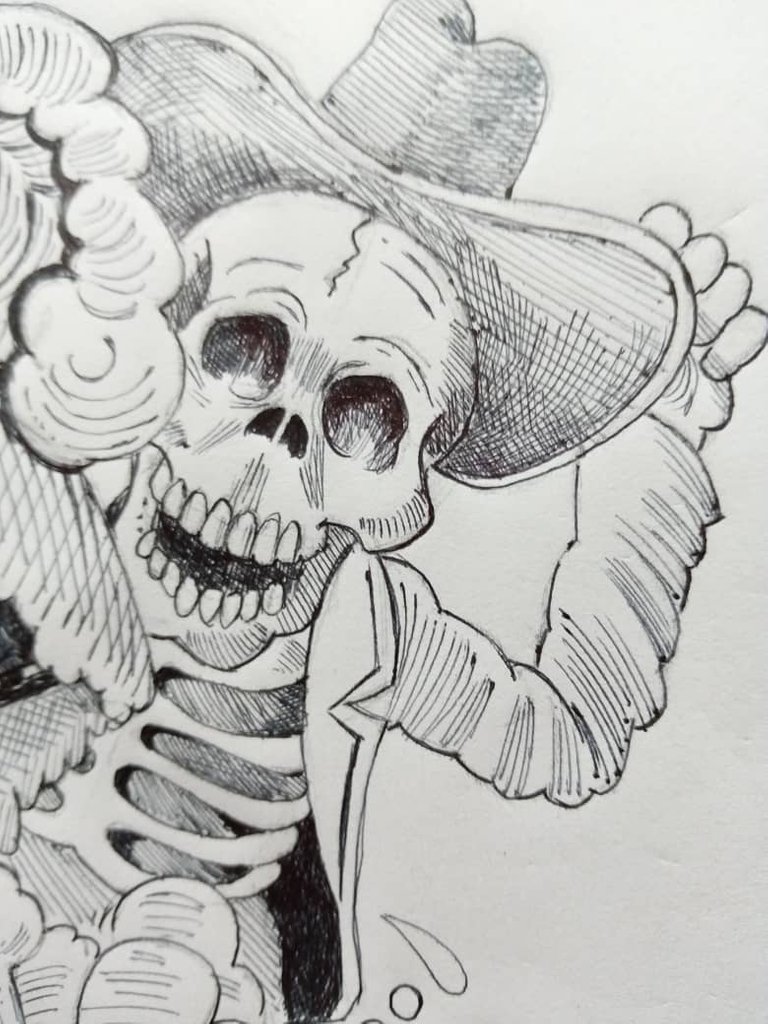
The criminal skull Engraving from 1943.

Final result
Cartulina blanca tamaño 34 x 28 cm
Lápiz F
Borrador
Bolígrafo marca pointer semigel 0.07mm negro
Fotos de referencia
Materials used:
White cardboard size 34 x 28 cm
Pencil F
Eraser
Ballpoint pen pointer brand semigel 0.07mm black
Reference photos
imagenes de referencia
Gracias por ver mi publicación
Thank you for viewing my publication
Thank you so much for your support of my @v4vapp proposals in the past, my previous one expired this week.
I'd be really happy if you would continue supporting my work by voting on this proposal for the next 6 months:
Additionally you can also help this work with a vote for Brianoflondon's Witness using KeyChain or HiveSigner
If you have used v4v.app I'd really like to hear your feedback, and if you haven't I'd be happy to hear why or whether there are other things you want it to do.